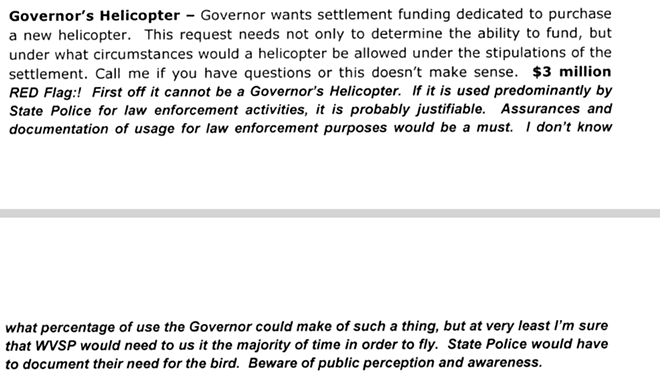Orange County leaders on Tuesday heard tentative plans for how the county could spend the millions of dollars it’s set to receive as part of national settlement agreements reached with manufacturers and distributors of prescription opioids.
Those legal settlements, worth an estimated $54 billion, were borne out of lawsuits filed against companies like Walgreens, Walmart, CVS Health, and pharmaceutical companies over their role in the U.S. opioid epidemic, linked to thousands of fatal drug overdoses each year.
Settlement funds will arrive annually in Florida through 2040. Through an agreement finalized by the state, and by state law, Orange County will be getting a slice — and it’s not chump change.
Dr. Thomas Hall, director of Orange County’s Office for a Drug-Free Community, told the board of county commissioners on Tuesday the county will receive $26 million over the next six years alone, or about $5 million each year, specifically from a regional fund.
That regional settlement fund was set up by the state of Florida for qualifying counties that had at least 300,000 residents and certain infrastructure in place to tackle the overdose crisis at hand.
The regional funds represent over a third of the at least $1.6 billion the state of Florida is set to receive from the national settlements, according to planning documents. Another 15% will go to city and county funds (smaller than the regional ones), and the rest will go into a state fund.
Most of the money from the settlements must be used for specified purposes, so as to avoid repeating mistakes made in the past, when a portion of funds from a $240 billion tobacco settlement in the 1990’s was later found to have been used for things like corporate tax breaks — and even subsidizing tobacco farmers.
In 2007, U.S. Sen. Joe Manchin, then governor of West Virginia, reportedly tried to use $3 million from a Purdue Pharma settlement to buy himself a “governor’s helicopter.” (In an analysis of the spending plan by a member of his administration, this request received a “RED flag!” note.)
This time, at least 85% of funds under the national settlements must go toward addressing the opioid epidemic. An example would be funding addiction treatment, prevention and recovery services. There’s a list of suggested strategies for elected leaders, but no clear definition guiding what exactly what “addressing” the epidemic needs to look like or must entail.
It’s up to individual states, and local governments, to come up with those specifics themselves.
Factors like politics and geography can matter, KFF Health News has reported.
Orange County, for its part, established a committee to work on a plan for allocating its share of funds last year.
Dr. Hall, a licensed mental health and substance use treatment provider, told the board of county commissioners that the committee would like to see 88% of money received through the regional fund for Orange County go toward treatment and recovery initiatives.
“Expanding access to systems of care is really important because what we see is a lot of the clients that we work with don’t have access to care,” said Hall, who helps oversee substance use initiatives within the county.
“They’re uninsured or underinsured. They lack transportation, they lack stable housing, and they’re forgotten.”
The other 12% of funds, per the committee’s proposal, would go toward prevention projects and research, into topics such as unmet community needs and the effectiveness of treatment interventions.
The goal is to fill existing gaps in care by, in part, expanding existing initiatives in Orange County, such as a 24/7 Recovery hotline run by certified peer specialists and an opioid addiction treatment program in the county jail.
Nearly one in four of all county residents who died of opioid overdose in 2022 were formerly incarcerated people who died within one year of being released from jail, according to Hall.
National data shows incarcerated people are at an elevated risk for addiction relapse and overdose upon release, especially if they’re not connected to a system of continuing care.
“That’s why this work is so important,” said Hall.
The program, run in partnership with Aspire Partners, provides the “gold standard” treatment for opioid addiction: medications federally approved for treating the condition, including methadone, buprenorphine and naltrexone.
It also works in tandem with a wrap-around program, the Recovery Enhancement Project, which aims to provide a “warm handoff” from the jail to a recovery care team in the community.
But Hall clarified that the committee also wants to use settlement funds to expand treatment access for others, too, particularly in underserved communities.
Medication-assisted treatment, a combination of medication and counseling, “is one of the more successful strategies and treatments with opioid overdoses,” said Hall.
Research shows that medications like methadone and buprenorphine can cut the risk of overdose in half, yet only 1 in 5 U.S adults with opioid addiction receive it.
“We want to increase the access to medication-assisted treatment throughout the community, but particularly with folks who are uninsured or underinsured,” Hall said.
Other plans for the settlement funds include:
-
Supporting a 24-hour Recovery Hotline run by certified peer specialists
-
Launching a mobile medication-assisted treatment clinic, dubbed the “Better Access to Treatment mobile” or BATmobile (Yes, Hall joked that the process of acquiring an actual Batman costume for Orange County’s director of health services is underway.)
-
Expanding the Recovery Enhancement Project to hospitals, with a focus on reaching people with severe, chronic opioid addiction who are frequently hospitalized for overdose
-
Increasing opioid treatment education and awareness training for physicians through a partnership with the UCF College of Nursing
-
Funding to hire an additional case manager for the county’s drug court
-
Funding to hire a case manager for a program that serves newborns with neonatal abstinence syndrome and their parents
-
Supporting public awareness campaigns about fentanyl, the risks of using multiple drugs (what the CDC calls “polysubstance use”) and stigma reduction
The county already has some public education campaigns floating around, including a youth-focused “Better Without It” campaign for middle- and high-school students.
The county also has a team of volunteer “opioid navigators” who provide training on how to reverse an opioid overdose with naloxone (Narcan), and who reach incarcerated people through the jail program.
All of the navigators are licensed social workers, said Hall, who can reach people before they leave jail, and who can help provide coordination assistance for things like transportation to treatment or a job program.
Explaining the need for these wrap-around services, Hall pointed out, “We can make appointments for them, but if they have no way to get to the appointment, it’s futile.”
Elsewhere in the U.S., some counties have already been scrutinized for repeating bad history in their allocation of opioid settlement funds.
While 85% of funds must go toward addressing the epidemic, the other 15% can be unrelated — and that spending must be reported publicly.
A rural California county, for instance — which recorded the highest number of overdose deaths in the state — has decided to use more than $63,000 of its opioid settlement funds to help fill a budget shortfall, Capital Public Radio reported. It’s being spent on things like employee health insurance premiums, wage increases and cost-of-living adjustments.
One Tennessee county has used over $3 million in settlement funds to pay off the county’s debt and fund unrelated capital projects, like a $50,000 “litter crew vehicle,” according to KFF Health News.
Even the use of that 85% of funds can be loosely interpreted. The state of Louisiana, for example, plans to give 20% of its settlement funds directly to local sheriffs’ offices to combat the epidemic — leaving actual spending up to the sheriffs’ discretion.
Other states have shared plans to fund harm reduction projects, like an overdose prevention center (aka safe consumption site) in Rhode Island.
A one-page explainer from the DeSantis administration shows the state of Florida plans to use funds to, among other things, create an Office of Opioid Recovery, develop mobile treatment units, support recovery housing, and expand the state’s Coordinated Opioid Recovery network.
The Orange County board of county commissioners on Tuesday largely praised the county committee’s proposal for how the regional settlement money should be spent.
District 1 Commissioner Nicole Wilson acknowledged the work of Dr. Hall’s team in the Office for a Drug-Free Community to look out for people “that have largely been discarded by so many.”
“Those are our brothers, our parents, our sons, our daughters,” said Wilson. “So thank you for using that love and leading with love, and for showing the world, I believe, that we can bring those people back in and make them part of our every day.”
District 3 Commissioner Mayra Uribe also offered thanks, and added that she hopes the county can also pursue recovery and prevention initiatives within the juvenile justice system.
“We know rehab is expensive, right?” she said. Parents of children with addiction, presented with the opportunity to help their kids get “clean and sober,” would jump at that chance, she said.
District 6 Commissioner Mike Scott asked Hall if there will be any sort of evaluation of the effectiveness of these programs and initiatives, to guide their use of funds in the year to come.
Hall confirmed that there will be quarterly reports for the county commission which will include data that’s both quantitative (measurable by number) and qualitative (a measure of quality).
Part of determining the effectiveness of these initiatives, he explained, will include interviews in the community with those served by the program and their families, to identify primary barriers to care in an effort to improve the overall care system.
Data shows that at least something they’re doing so far might be working. Opioid overdose deaths in Orange County decreased slightly last year, reversing a yearslong trend.
Hall’s office — and community partners — have attributed it to existing projects funded by the county, like community Narcan training and public awareness campaigns about fentanyl, a powerful opioid involved in a majority of overdose deaths.
But, with risky substances like xylazine (also called “tranq”) entering the illicit drug market, Hall said there’s no guarantee that downward trend will continue.
“Nonetheless, we’ll continue to work with our community partners to increase access to evidence-based treatment and recovery services.”
Where to find help
If you or a loved one is struggling with a drug or alcohol problem, here are some resources for finding help.
You can access Substance Abuse and Mental Health Administration’s treatment locator online, or call their National Helpline at 1-800-662-HELP (4357).
To find naloxone, visit isavefl.com, or access free naloxone at Orange County Department of Health locations listed here.
The Orange County government also has a list of treatment resources, including social services, on its website.
Subscribe to Orlando Weekly newsletters.
Follow us: Apple News | Google News | NewsBreak | Reddit | Instagram | Facebook | Twitter | or sign up for our RSS Feed


